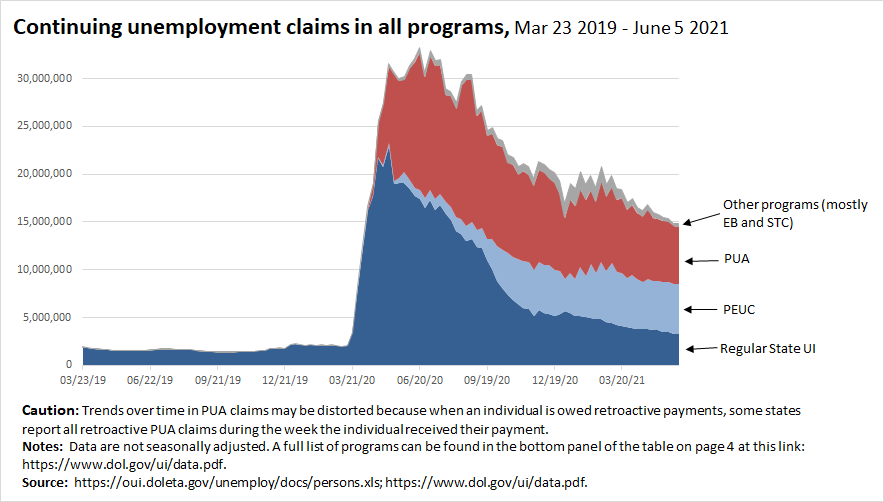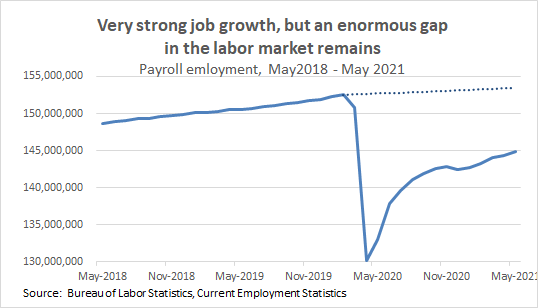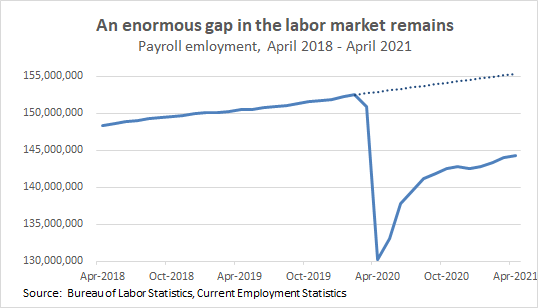
Job growth picked up in October to 531,000, and upward revisions to prior data put the three-month average at 442,000. That is lower than the pre-delta period—job growth averaged 710,000 per month in the six months before delta—but it’s very strong growth. 1/
Worth noting: slower job growth in the delta-period has been accompanied by slower wage growth in most industries. 2/ 

This is yet another sign that the strong wage growth we have seen in some industries this year is not a permanent shift in worker bargaining power, but a temporary result of the (very) unique circumstances of this recovery. 3/
For sustained strong job growth for working people, we need organizing and policy changes like the PRO Act, minimum wage increases, etc. 4/
My biggest concern in this report is the gap in state & local govt jobs. S&L govts lost 70,000 jobs in Oct on a seasonally adj basis, and are down 928,000 since Feb ‘20—most of that, 574,000, in education. It’s critical that S&L govts use their ARP funds to refill those jobs. 5/
Another thing: it’s fantastic to see the unemployment rate marching down, but the overall unemployment rate is, as usual, masking a lot. Racial disparities remain huge: the white UR is 4.2% and the Black UR is 7.9%. 6/
And 4.4 MILLION workers are out of the labor force as a result of COVID (as in: if the LFPR hadn’t dropped since Feb 2020, there would be 4.4 million more people in the labor force). Counting those folks and others who are misclassified, the unemployment rate would be 7.3%. 7/
Great point here: the true gap in the labor market right now is somewhere between 5.5 million and 8.2 million jobs, depending on how you calculate the counterfactual.
https://twitter.com/eliselgould/status/1456606357973610500?s=20
Whoops, in an earlier tweet in this thread I said the white unemp rate is 4.2%, but it's 4.0%. The Black unemp rate is almost twice as high, at 7.9%. Things like occupational segregation, discrimination, and other factors related to structural racism lead to enormous disparities.
• • •
Missing some Tweet in this thread? You can try to
force a refresh







